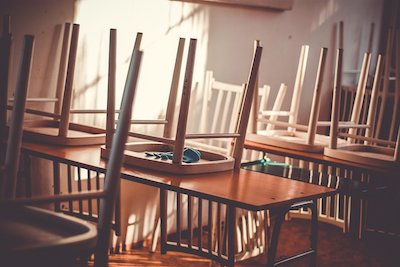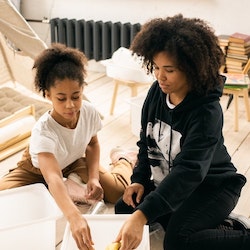“No. I’m not a 24-hour short-order cook.” That’s what I say multiple times a day. Mind you, I’m in my bedroom/office trying to work. It’s great. (In second place is, “How can you play Minecraft for so many hours?”) And the kids have completely ruined my evenings. They don’t go to bed before 10 pm. Coronavirus sucks. But are they falling behind?
Let’s take a look back at spring 2020: Schools closed. A chaotic move to distance learning. And a big old mess of anxious parents.
I was bombarded with the question, “Are my kids going to fall behind?” A shrug of the shoulders wasn’t a satisfactory answer, so I interviewed teachers and administrators from K-12 public, private, and charter schools, and wrote Relax – Your Kids Are Not Falling Behind.
That was then. So what’s happening now? I circled back to the educators. In the spring, they weren’t concerned about academics. Rather, it was social-emotional development that kept them up at night. Attendance was low in the spring, and everything was dumped on the teachers. It could charitably be called a sh*t show (I have Permission to Curse). “Don’t worry,” I preached, “they’ll be prepared for the new school year.” Was I misleading them? According to George Costanza, “it’s not a lie if you believe it.”

Three main themes emerged:
- Preparation was spotty.
- Attendance is critical but the data is mixed.
- Behind what? Social-emotional concerns remain.
Preparation was spotty
Forward-looking schools and districts got to work last April. They knew there was a real possibility that schools would stay shut, so they addressed future technology needs, engaged in meaningful planning, and supported teachers (see Cajon Valley Union School District). Unfortunately, that seems to be the exception.
Many districts did the bare minimum. According to several teachers in the Los Angeles Unified School District, the support offered to them included broad instruction on policy and technology. “Why didn’t we separate into content areas? Why didn’t the District plan better?” one frustrated public school teacher said. “We have to figure everything out ourselves.” She did not wish to be identified for fear of retaliation.
Thus, like in the spring, the main burden was placed on teachers. I can speak from experience that some teachers enjoy and have an easy time embracing technology and others simply don’t. They need much more help.
Attendance is critical, but the data is mixed
Student attendance is directly correlated to better student outcomes. In the spring, attendance was awful across the board. Now it depends on where you look.
First, the bad news. Students of color and low-income students are suffering. Lack of access to technology is a major problem. Reports are emerging that these students are slipping through the cracks (see As Schools Go Remote, Finding ‘Lost’ Students Gets Harder). To be fair, though, there’s not a lot of hard data to go on. article continues after advertisementhttps://cac8433e9964ece568ef0cceed8cad70.safeframe.googlesyndication.com/safeframe/1-0-37/html/container.html
That’s not the whole story. In my conversations, teachers and administrators reported something different. One charter middle school teacher said that attendance was better now than before the pandemic. Students are “starving for something different from the summer,” he told me. In person, “there are usually 4-5 kids who raise their hands in class. Now, 23 kids are participating live.” A public elementary school teacher agreed. “Students are desperate and hungry to see faces that they are not related to.”
Behind what? Social-emotional concerns remain
The main concern of every educator I spoke to in the spring was social-emotional development. It still is. One administrator said she is “worried about skill-building that comes from interpersonal work – solving problems, dealing with people you don’t like so much. These are important parts of schooling, especially for the littlest ones.”
“We’re at a grieving place,” said a public elementary school teacher. “There’s profound sadness.”
And academics? Schedules, hours, and methods vary widely from school to school. This can’t be good. There’s no doubt what and how kids learn right now is unequal. Fewer hours interacting with teachers and classmates have to have an impact. But there is another way to look at it.
“It’s possible that your child will not get everything they would have in a traditional classroom. It’s possible your child will get some amazing things they would not have gotten in a traditional year. We’re all in the same boat,” a public middle school teacher said.
It’s going to take a long time to figure out the academic and emotional impacts of Covid-19. For now, it’s clear that the efficacy of remote learning depends on who the student is, where they live, how much money their parents have, and who their teachers are. It’s a problem, for sure, but the question remains how large of a problem. Time will tell.


